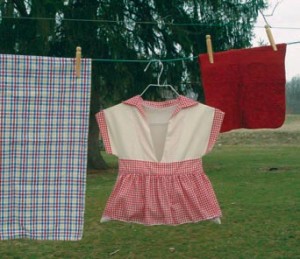
One of the better value strategies for a low impact, more carbon neutral way of life is to compost. You do not need a huge garden. You just need to figure out the best way to match your own domestic set-up. When you compost carefully you will be given a wonderful by product – humus. This is a dark brown, light and crumbly soil that is gold to all gardeners.
Compost is the natural way to recycle waste and it is truly a miracle in the making. You layer up newspaper and cardboard (brown material) or woody shrub prunings (also brown material) with the moist ‘green material’ – the potato peelings, damp paper towels, tea bags and coffee grounds. You make a compost ‘lasagna,’ alternating the dry and damp in layers. In time, heat and worms do the real work of breaking it down until there is a lovely, crumbly mixture. My first gardening teacher, Delores Keegan, pronounced that the best way to construct compost was to lay down a piece of newspaper, scrap your spuds, parsnips and carrots onto the paper, wrap it all up and then you have the perfect brown and green balance in a neat parcel to deposit in your compost bucket.
Not everyone is as careful a cook or gardener as Delores. If you are not careful in the ‘lasagna’ approach toward constructing your compost pile then you will need to turn it. For gardens with limited space, or for folk who need to cherish their backs, a tumbler compost bin is ideal. (Lehman’s offers two tumbler-style composting bins.)

This saves the labour and back strain of having to empty or uncover the pile, turning with a pitchfork and then covering it again.
There is currently a campaign to encourage people to use up their leftovers since a huge amount of uneaten food goes to landfill and creates methane and therefore CO2. Unfortunately, cooked food cannot go onto a compost heap. Unless you want to attract vermin who will then take up residence during winter as the heat makes a cosy little nest for them. A wormery is an ideal solution for the busy family that generates food scraps that languish at the back of the fridge. Not everyone has the time to get creative with the half serving of baked beans and one sausage that is going desiccated at the tips.

What’s more, kids can be very fussy about leftovers turning up in lunch box menus. So, with the best will in the world and recipes online from lovefoodhatewaste.com there are times when a wormery is the better part of valour for some families to reduce waste to landfill.
If you are squeamish about worms, you don’t even have to look at them once they are in their slot. You just feed them scraps and they give you this amazing liquid plant food that you can use on houseplants and in the garden. If you have any surplus feed just give it to gardening friends who will be overjoyed to have a perfectly organic liquid plant feed to nothing!
Whether you create humus to enrich your flower beds and vegetable plot, or you create liquid feed to nurture those plants, it is such a creative way to recycle. Humus shares the word root with humility – which is to be grounded or connected with the earth. It has not the remotest connection with shame. It is all about the being bound to the earth’s creative cycles and an intelligence that knows how to endlessly regenerate. If we learn from the miraculous process of composting then we can certainly turn back the tide of environmental degradation.






























We have composted all our food scraps, barn cleanings and the like for nearly 20 years and have gained lots of good rich soil.
Its a simple way to enrich land
not a chance i’d eat that crud